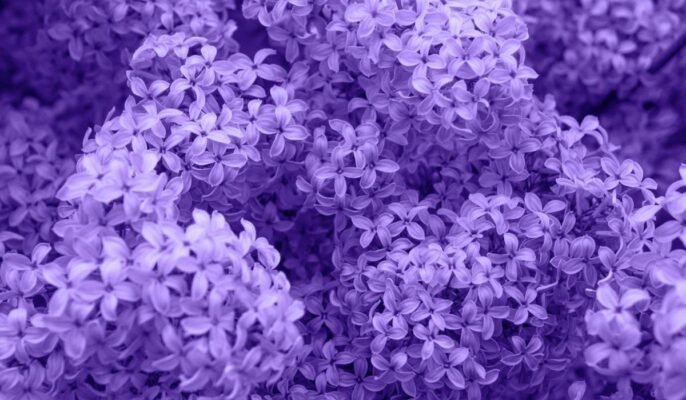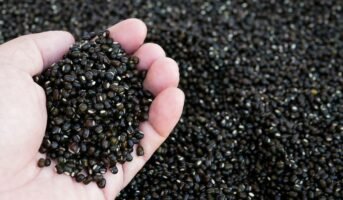If you’re searching for details about the lilac flower, then you’re at the right place. Lilacs (Genus: Syringa), with their stunning and fragrant blooms, are one of the most beloved of all flowering shrubs. These plants, which are known for their vast array of colours, may only provide a single season of visual interest, but the arrival of their spring blossoms following a harsh winter is a highly anticipated and cherished event.
What makes the common lilac so remarkable is its ability to provide an array of colour options, including lilac/purple, white and cream, pink, and even yellow. The eye-level blooms are not only great for cutting but are also a source of nectar for butterflies. The individual flowers can be single or double, creating a stunning visual display in the garden.
See also: How to grow and care for Crape Myrtle?
Lilac: Key facts
| Botanical Name | Syringa |
| Family | Oleaceae |
| Root | Shallow root system that spreads widely |
| Height and spread | Grow to be 6-12 feet tall and wide |
| Leaves | Oval-shaped, green, and typically 2-6 inches long |
| Flowers | Highly fragrant and typically purplish-blue in colour, although they can also be white, pink, or red. |
| Fruit | Small, dry, and inconspicuous |
| Adaptability | Best in well-drained soils and sunny locations |
Source: Pinterest
Lilac: Physical description
Lilacs are deciduous shrubs that are prized for their beautiful, fragrant flowers and attractive growth habit. Here is a physical description of lilacs:
Height and spread: Most lilacs grow to be 6-12 feet tall and wide, although smaller cultivars are available for gardens with limited space. They have an upright, branching growth habit.
Leaves: Lilac leaves are oval-shaped and typically 2-6 inches long. They are green in colour and deciduous, meaning that they will fall off the plant in the fall.
Flowers: Lilacs are well known for their fragrant, showy flowers. The flowers are typically purplish-blue in colour. They grow in large clusters and bloom in late spring to early summer, attracting pollinators and adding beauty to the garden.
Fruit: After flowering, lilacs produce small, dry, and inconspicuous fruits, which are not typically eaten by humans.
Growth habit: Lilacs are fast-growing shrubs that are relatively low-maintenance once established. They have a shallow root system that spreads widely, making them well adapted to growing in garden beds and pots.
Adaptability: Lilacs are hardy plants that can grow in a variety of soils and climates, although they do best in well-drained soils and sunny locations.
Lilac: How to grow?
- If you’re fortunate, you may come across a rooting shoot or a young plant that has sprouted from the root system of a mature plant. Despite its initial appearance, all you need to do is dig a hole, fill it with soil, and plant the shoot. With proper watering and time, you’ll be amazed at the transformation that takes place. In just 4 to 5 years, you’ll be able to enjoy a magnificent display of huge and fragrant blooms that are sure to impress.
- Planting nursery lilacs is simple. Spread roots for container-grown plants or remove covering for balled/burlapped before planting. Place 2-3 inches deeper than in the nursery, then add topsoil around the roots. Fill the hole with more soil and water.
- When planting multiple lilac bushes, it is recommended to space them at intervals ranging from 5 to 15 feet apart, depending on the specific variety of the plant.
- To keep your lilac bushes thriving, it’s important to provide them with proper care each spring. Start by spreading a layer of compost beneath the plant, which will provide the necessary nutrients for healthy growth. Then, add a layer of mulch on top, which will help retain moisture and prevent the growth of weeds. This simple yet effective routine will keep your lilacs looking their best year after year.
- Ensure your lilac plants receive adequate hydration by providing supplementary water during summer months, especially if rainfall is less than 1 inch per week.
- Overfertilisation can prevent lilac plants from blooming, so it’s important to exercise caution when applying fertiliser. A small amount of 10-10-10, about a handful, applied in late winter should suffice. Avoid using excessive amounts, as this can have a detrimental effect on the plant’s health and blooming ability.
- To keep your lilac bush healthy and looking its best, it’s important to attend to it after the blooms have faded. One simple way to do this is by spreading lime and well-rotted manure around the base of the plant. This will provide the necessary nutrients for strong growth and healthy development. Additionally, take the opportunity to shape the bush by trimming it, and remove any unwanted suckers while you’re at it. With these simple steps, your lilac bush will be well on its way to another year of beauty and fragrance.
Source: Pinterest
Source: Pinterest
Lilac: Care tips
- Sunlight: Lilacs need full sun to partial shade to grow well.
- Watering: Water regularly during the first growing season, then only during periods of drought. Do not over-water, as lilacs do not tolerate wet soil.
- Soil: Lilacs prefer well-draining soil that is slightly acidic to neutral.
- Fertilising: Fertilise with a balanced fertiliser in early spring to promote growth and blooms.
- Pruning: Prune immediately after flowering to encourage healthy growth and abundant blooms the following year.
- Pests and diseases: Inspect the plant regularly for pests and diseases and treat promptly if necessary.
- Winter protection: In colder climates, protect the base of the shrub with mulch in the winter to prevent frost damage.
By following these care tips, you can help ensure that your lilac shrub thrives and produces beautiful blooms year after year.
Source: Pinterest
Lilac: Uses
Lilac, a flowering shrub also known as Syringa, has a number of uses, including:
- Ornamental use: Lilacs are popular for their fragrant and attractive blooms, making them a common choice for gardens and landscaping.
- Aromatherapy: The strong fragrance of lilacs can be used to refresh the air and enhance moods, making it popular for use in candles, perfumes, and potpourri.
- Cooking: Lilacs are edible, and the flowers and leaves have been used to flavour dishes and drinks, such as syrups, jellies, teas, and baked goods.
- Medicinal use: In traditional medicine, lilac has been used to treat various ailments, such as coughs, colds, and digestive problems.
- Cut flowers: Lilac flowers are popular as cut flowers and are often used in floral arrangements.
- Essential oils: Lilac essential oil is extracted from flowers and used in cosmetics and personal care products for its fragrance and skin-soothing properties.
Lilac: Toxicity
Lilacs are popular ornamental plants that are prized for their beautiful, fragrant flowers and attractive growth habit. However, they can be toxic if ingested in large quantities. The leaves and stems contain compounds that can cause gastrointestinal upset, including vomiting, diarrhoea, and abdominal pain.
In severe cases, ingestion of large quantities of lilacs can cause respiratory distress and even death. If you suspect that someone has ingested a large quantity of lilacs, it is important to seek medical attention immediately. The best way to prevent lilac toxicity is to keep the plant out of reach of children and pets and to educate others about the potential dangers of ingesting the plant.
FAQs
What is the best time to plant lilacs?
The best time to plant lilacs is in the fall or early spring.
How do you care for lilac bushes?
Lilac bushes need regular watering, especially during dry spells. You should also mulch the plants to conserve moisture and suppress weeds. Pruning should be done immediately after flowering to encourage new growth.
What kind of soil does a lilac need?
Lilacs prefer well-drained soil with a slightly acidic pH. They can grow in a range of soils, including clay, sand, and loam.
How often do lilacs bloom?
Lilacs usually bloom once a year, typically in spring. There are early, mid, and late-season lilacs that can extend the blooming period.
What kind of light does a lilac need?
Lilacs prefer full sun, but they can also grow in partial shade.
Can you grow lilacs indoors?
Lilacs are not suitable for indoor growth due to their size and need for full sun.
| Got any questions or point of view on our article? We would love to hear from you.
Write to our Editor-in-Chief Jhumur Ghosh at jhumur.ghosh1@housing.com |
Housing News Desk is the news desk of leading online real estate portal, Housing.com. Housing News Desk focuses on a variety of topics such as real estate laws, taxes, current news, property trends, home loans, rentals, décor, green homes, home improvement, etc. The main objective of the news desk, is to cover the real estate sector from the perspective of providing information that is useful to the end-user.
Facebook: https://www.facebook.com/housing.com/
Twitter: https://twitter.com/Housing
Email: editor@housing.com

